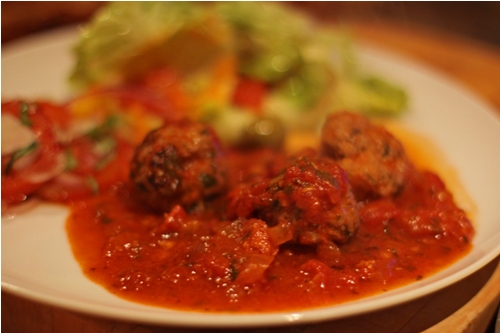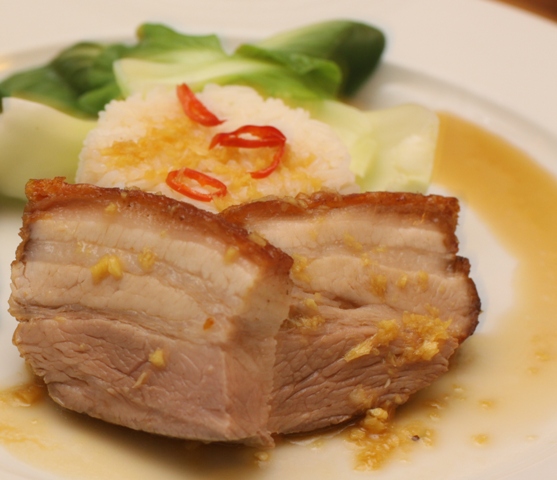Albondigas árabe – my Moorish meatballs
 Tuesday, February 7, 2012 at 10:58PM
Tuesday, February 7, 2012 at 10:58PM 
It is a bit cheeky of me to give my meatballs this name, because they are exactly that – mine. They are neither traditionally Spanish nor from the Moors, but they are packed full of Moorish spices and these are used a lot in the south of Spain where the Moorish influence is most prevalent. Indeed the Spanish are rather quick to add this suffix; a little pinch of cumin or all spice seems enough to mark a dish Moorish and so I am following suit. Oh, and a double whammy of alliteration in both languages was too much to resist.
I started out with the intention of making traditional Spanish albondigas, but even those would rarely involve chorizo or paprika, despite these both being typical Spanish ingredients. Then I got carried away and decided on a Moorish theme adding all spice, cumin, nutmeg and ground coriander too. The result was spicier than the meatballs you would typically get in a tapas restaurant in Spain, but it was wonderfully hearty and warming and the chorizo and paprika gave it a deep, smoky flavour. If you prefer something milder you could tone it down by using sweet smoked paprika and skipping the chilli. And for something smoother with less intensity, you might like to try adding thyme in place of the fresh coriander.

